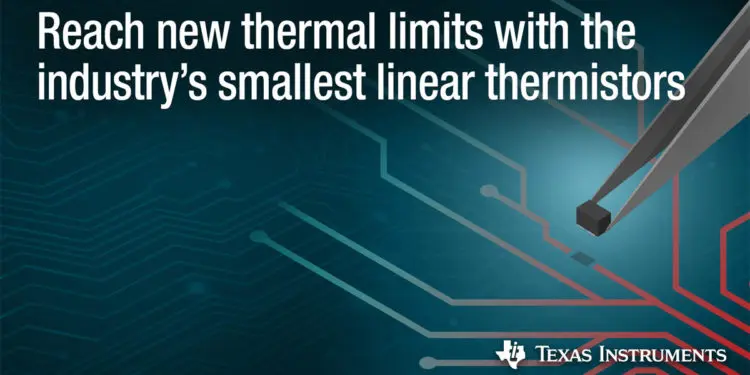TI’s new temperature sensors offer 50% higher accuracy, high sensitivity and single-point calibration.
Texas Instruments (TI) expanded its temperature sensing portfolio to include linear thermistors that deliver up to 50% higher accuracy than negative temperature coefficient (NTC) thermistors. The higher accuracy of TI’s thermistors enables operation closer to the thermal limits of the other components and the overall system, helping engineers maximize performance while reducing bill-of-materials (BOM) and total solution cost.
NTC thermistors are widely used due to their low price; however, they present several challenges to design engineers, including degraded performance at temperature extremes and complex calibration requirements, which increases design time. TI’s new linear thermistors are available at a similar price while providing significantly more value – most notably minimizing design time, reducing component count and increasing system performance.
Extend system performance and reliability
TI’s new thermistors deliver reliable, highly accurate thermal measurements, particularly at temperatures above 80°C. This is especially important for industrial, automotive and consumer applications where precise, real-time temperature readings are fundamental to system performance and protection. To learn more about the differences between NTCs and TI’s linear thermistors, read the white paper, “Temperature sensing with thermistors.”
NTC thermistors provide less accurate temperature readings due to their low sensitivity and high resistance tolerance at temperature extremes. To compensate for these challenges, many engineers calibrate at three points across the temperature range or use multiple thermistors to monitor different temperature ranges. These approaches can still produce unreliable temperature readings, which can require systems to shut down before reaching their true thermal limit. The linearity and high accuracy of TI’s thermistors enable single-point calibration, which maximizes system performance and simplifies design.
TI’s thermistors also offer very low typical drift of 0.5% to improve the reliability of temperature measurements, enabling designers to boost system performance while maintaining safe operation.
Reduce system cost and size
By eliminating the need for additional linearization circuitry or redundant NTC thermistors, TI’s thermistors help engineers simplify design, lower system cost and reduce printed circuit board (PCB) layout size by at least 33%, compared to NTC thermistors. In addition, TI’s thermistors are one-tenth the size of similar silicon-based linear thermistors, with a low profile and small package area that enable placement closer to thermal hot spots for faster thermal response and more consistent temperature measurements.


































